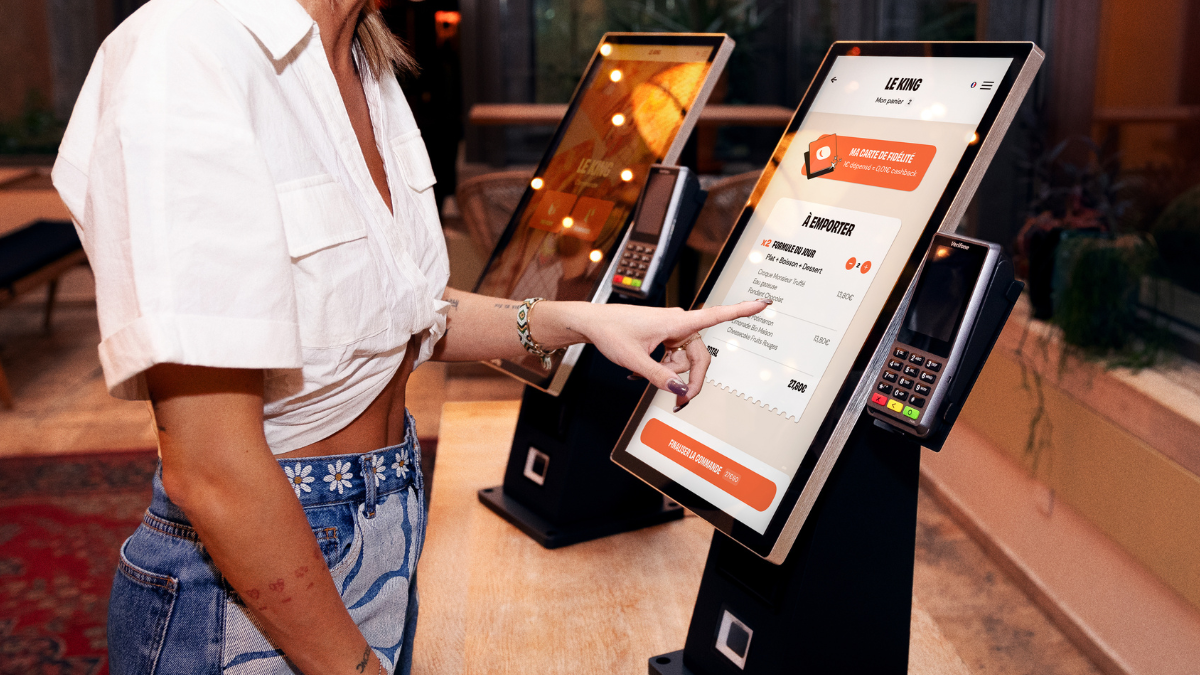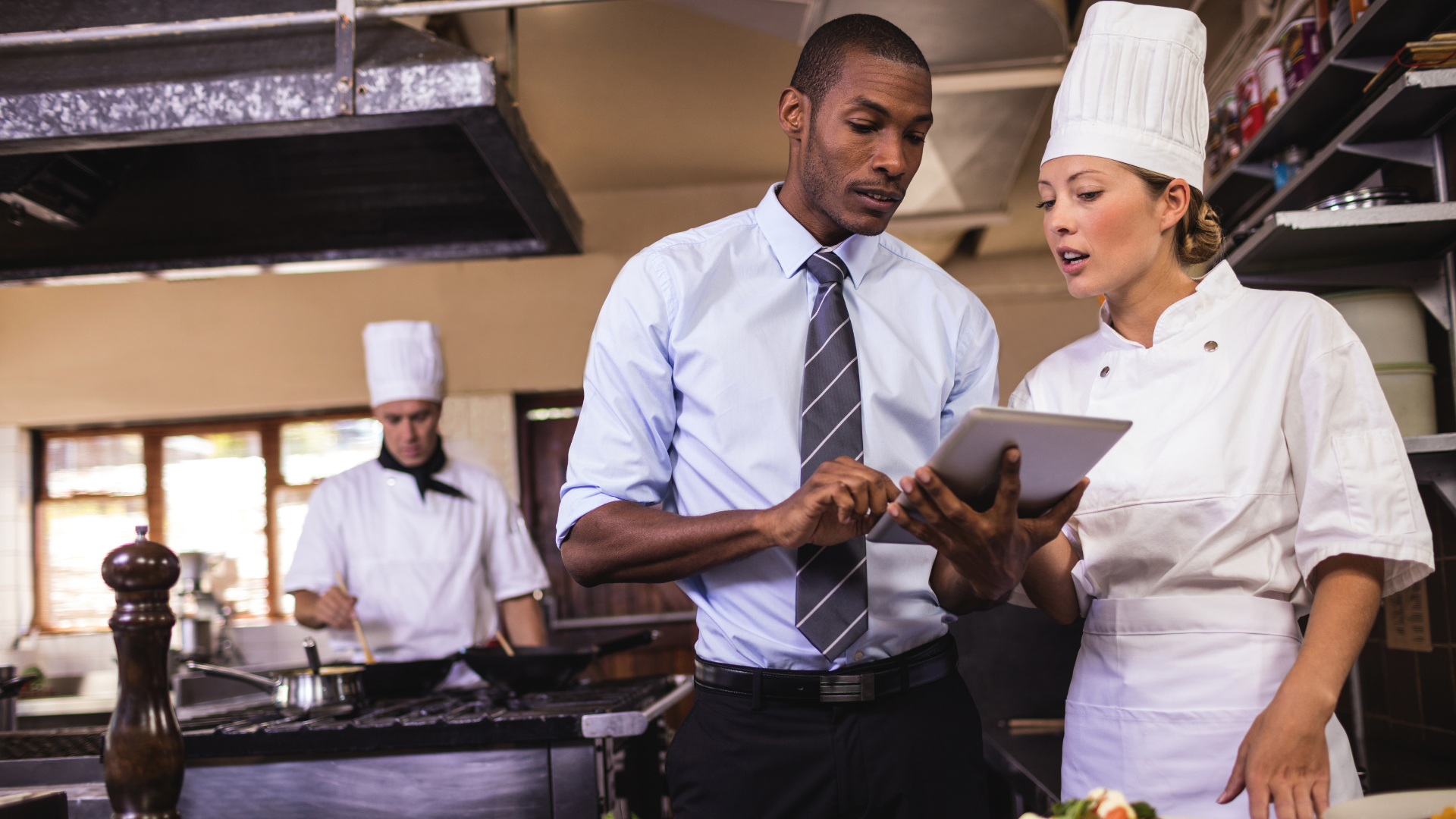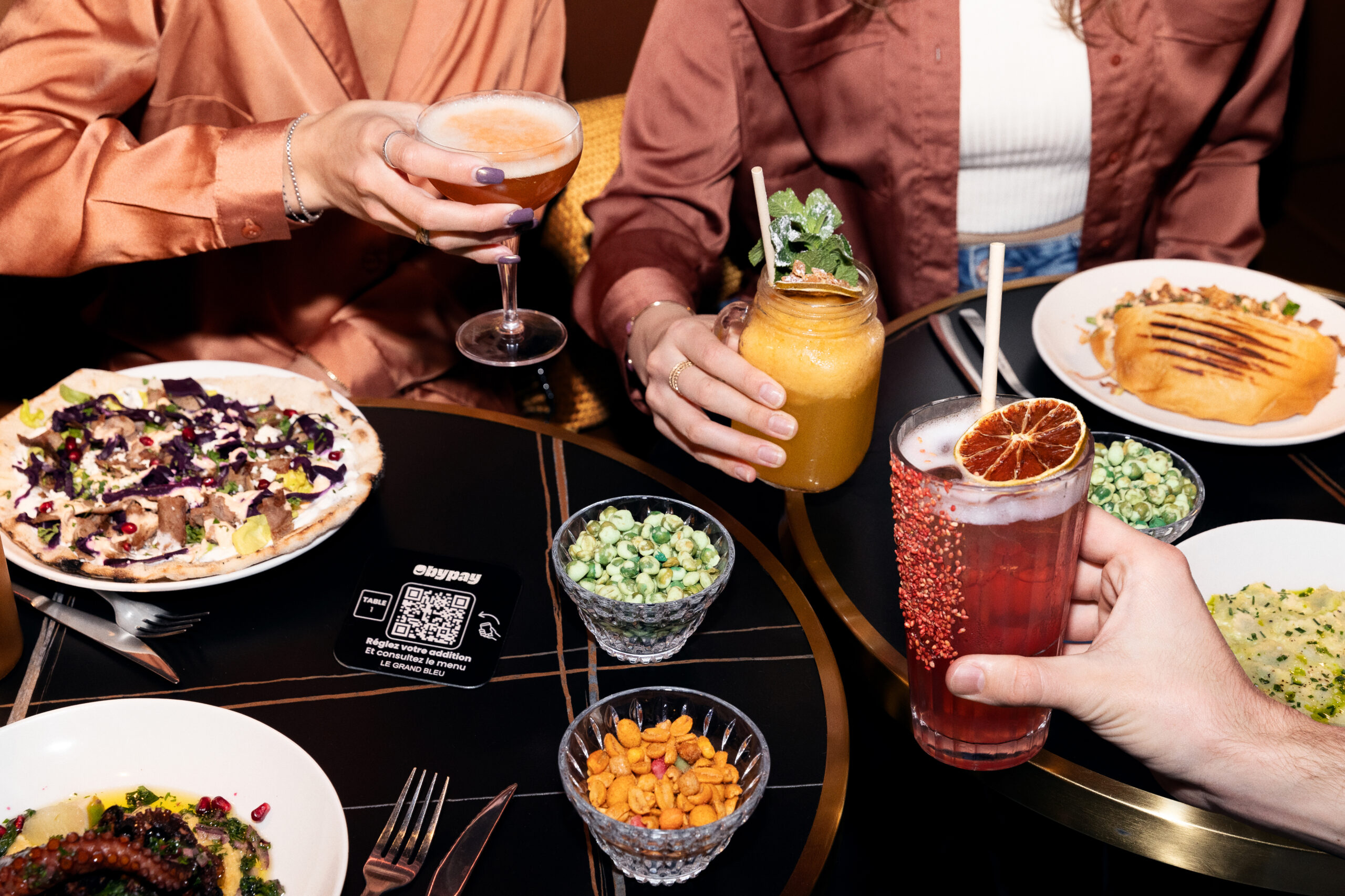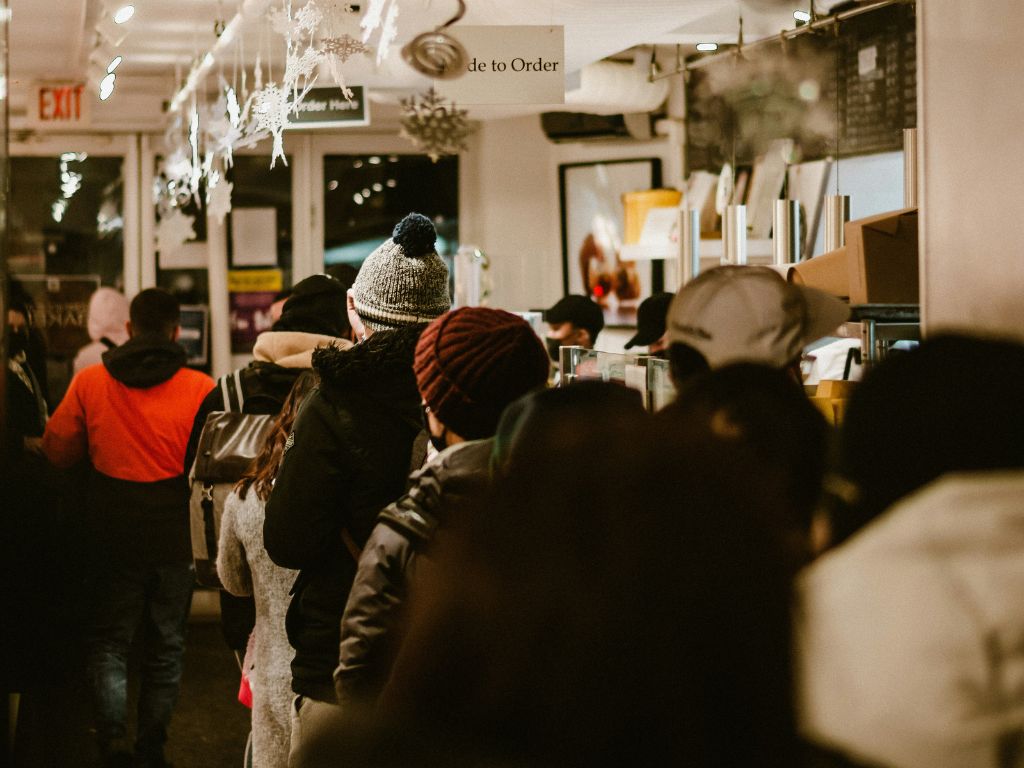The impact of order terminals on customer behavior: key facts and figures
February 28, 2025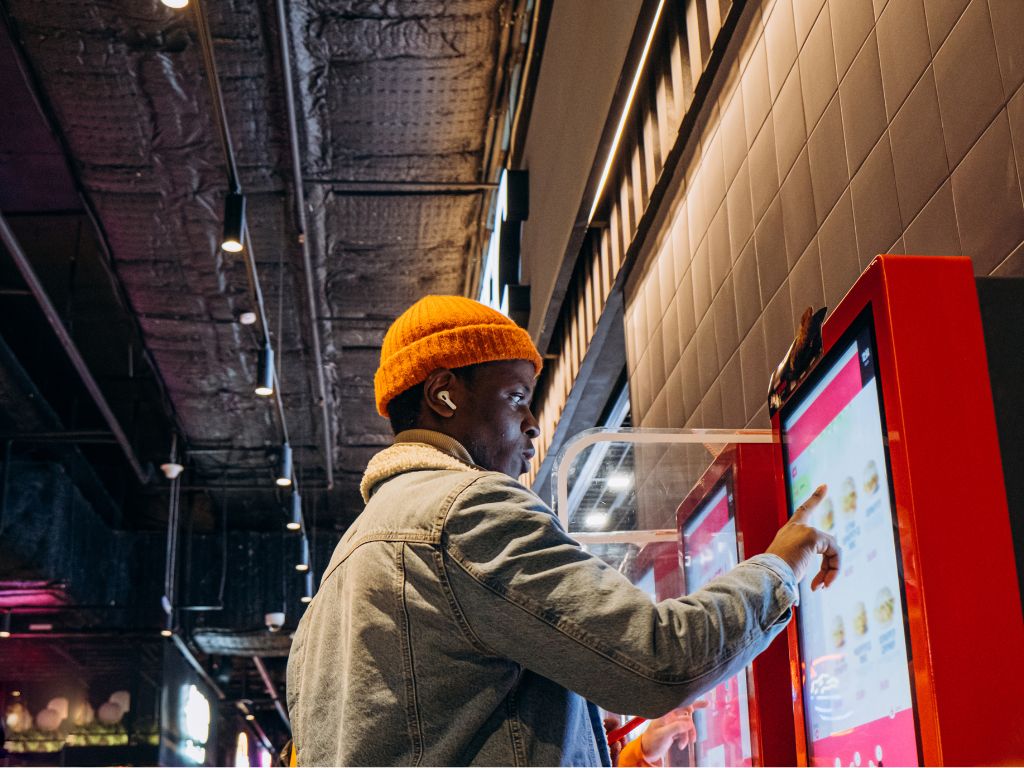
Ordering at a fast-food restaurant used to be an immutable ritual: a queue, a quick exchange with an employee, an often hasty choice, an order noted on the fly, then payment.
And then, control terminals have arrived. At first, they were seen as a simple time-saver, in fact, they have profoundly transformed the way customers choose, order and consume.
Less social pressure, more spontaneity, a different perception of prices and options... Switching to a digital interface is not just a question of speed or convenience: it has a direct influence on buying behavior and on decisions taken at the time.
Why do customers order differently from a kiosk?
➜ Because they no longer fear the gaze of others and dare to take on more extras.
➜ Because they are more easily guided by automated suggestions.
➜ Because they take their time to compareThey can adjust and personalize their order without feeling rushed.
➜ Because visuals and animations influence their choicessometimes more than a server can handle.
And for restaurateurs, these changes are not insignificant: a customer who buys differently also means an average shopping basket that is evolving, additional sales that are better promoted and a service that is adapting to new expectations.
This guide analyses how kiosks are changing behavior, what psychological biases come into play, and how these developments directly impact the customer experience and restaurant profitability.
01. Less social pressure: the emotional and inclusive dimension
Ordering from an employee means following a structured process that imposes a rhythm and a social framework. For some customers, it's harmless. For others, it's a source of stress.
Why?
➜ The queue imposes a rhythm: Waiting, the pressure of customers behind you and the waiter waiting for an answer all speed up the decision-making process. The result: rushed and sometimes frustrating choices.
➜ Interacting with an employee requires social effort: responding quickly, speaking loudly enough in a noisy environment, rephrasing a request if you don't understand it... all these elements can be uncomfortable.
➜ Hesitations are visible and felt as awkward : A customer who takes a long time to make a choice at the checkout may feel judged, whereas on a kiosk, he can compare options without external pressure.
Take your time, without blocking the queue
Nobody likes to be rushed when placing an order. However, in the checkout, waiting puts indirect pressure on customers Those who hesitate feel obliged to accelerate, at the risk of regretting their choice or forgetting something.
With a terminal, the pace adapts to the customer, not the other way around :
✔ He can compare options without stress.
✔ Modify or adjust his choice as much as he likes.
✔ Not having to respond immediately to a waiting employee.
A more inclusive and comfortable route
Not only do kiosks make ordering easier for everyone, they also play a key role in accessibility:
✔ An asset for customers who prefer to avoid social interaction: anxiety, introversion or a simple preference for autonomy... Whatever the reason, a terminal avoids an exchange that may be perceived as useless or burdensome.
✔ A solution for people who are deaf or hard of hearing : no need to explain your order verbally, everything is done via the interface.
✔ Convenience for foreign customers: they can select their language and avoid the communication barrier.
✔ Help for neuroatypical people: certain profiles (ASD, ADHD) can be sensitive to unexpected events and social interactions. A kiosk enables them to order in a more predictable, less stressful environment.
The number to remember : 78 % of consumers want more in-store digital solutions, proof that this autonomy is sought well beyond individual cases.
02. Lack of moral judgment: the psychology of food choice
The way others look at us influences our behavior, even unconsciously. At the checkout, a customer can adapt his choice according to the person he is talking to and the situation.
How does it translate?
➜ Extras are often avoided: customers may hesitate to add cheese or bacon if they fear being perceived as "too greedy".
➜ The default menu size is : he doesn't ask for a larger portion, for fear of a surprised look from the employee.
➜ Choices are more reasoned: some people prefer a dish perceived as more "acceptable" rather than the one they really want.
On a milestone, this social pressure disappears:
✔ The customer chooses without outside influence : he orders what he wants, without having to make a request or justify his choice.
✔ He dares to personalize further: it's easier for him to add supplements or modify his dish to suit his mood.
✔ The impact is direct on sales: studies show that purchases of extras (cheese, bacon, sauces) increase of 14 % on one terminalsimply because the customer feels freer.
"A customer hesitates between a normal portion and an XL version. At the checkout, he takes the former without thinking too much. On a kiosk, a visual suggestion offers him a supplement for a few cents more. Without fear of judgment, he chooses the more generous option."Practical example
Result: fewer psychological barriers, more spontaneous purchases and a higher average shopping basket.
03. A greater sense of control: autonomy and transparency
Ordering at the checkout involves delegating part of the process to an employee. It's the employee who notes down choices, applies promotions and finalizes the order. The customer, on the other hand, has to trust the waiter to get it right.
The limits of this approach :
➜ A lack of immediate visibility: At the checkout, it's not always clear to customers what options are available, what surcharges are possible, or what prices are detailed.
➜ Employee dependency: if he forgets a request or makes a mistake, you have to repeat the whole order.
➜ Difficulty modifying an order in progress: once validated by the server, any correction becomes more complicated.
On a kiosk, the customer takes control of the entire process:
✔ Real-time verification: he sees each choice displayed immediately and can adjust it before paying.
✔ Easy customization : adding, deleting or modifying an element requires no extra effort.
✔ Total price transparency: no surprises when you pay, all options are visible and detailed.
What this means in practice:
✔ Fewer ordering errors, because everything is checked and validated directly by the customer.
✔ Less frustration if you forget, since every addition is visible before payment.
✔ A better perception of the service, with a smoother, more controlled route.
"With a kiosk, customers feel they have more control over their purchase. He chooses, adjusts and validates without depending on an intermediary. For restaurateurs, it's a guarantee of more precise, better-structured orders."Things to remember
04. The impact of visuals and layout on purchasing decisions: why it's a key lever?
Order kiosks don't just replace order-taking at the checkout. They actively influence purchasing decisions, and their effectiveness depends to a large extent on the way products are presented. Good interface design can literally boost sales.
Why?
The eye is naturally attracted to certain visual elements, and our brain processes the images. 60,000 times faster than text. By optimizing the display on a kiosk, we can guide the customer's choice, reduce hesitation and maximize the average shopping basket.
Element hierarchy: structuring the display to influence choices
On a well-optimized terminal, not everything has the same importance on the screen. Some products are highlighted more strategically than others, and this is no accident.
✔ Best-sellers and profitable products appear first : the most popular options (or those most profitable for the restaurant) are often placed at the top of the screen or displayed with larger visuals.
✔ Menus and formulas are favored: Instead of only displaying individual products, the kiosk highlights combinations that are more advantageous for the customer... and more profitable for the store.
"Today, thanks to the Obypay solution, we make 50% of the bar's sales on tablets. We've seen an increase in the average basket per customer of over 30%."Julien Factory Bowling Manager
The effect of visuals and animations on decision-making
A text menu VS an illustrated menu: which do you prefer?
Catering is a sector where visual appeal plays a decisive role. On a kiosk, a product accompanied by an appetizing image is much more likely to be ordered than a text-only product.
How can we maximize this impact?
✔ High-quality images: well framed, bright, with a neutral background that highlights the product without distraction.
✔ Visual consistency: each product must be presented in a uniform way to ensure a harmonious interface.
✔ Photos of "real" dishes rather than generic visuals: customers want to see what they're going to receive, not an overly idealized version.
A study conducted by Tillster revealed that customers were 30 % more likely to order a product when it was accompanied by an image on an order terminal.
Using animations and dynamic effects to trigger sales
A static bollard and an attention-grabbing bollard with light entertainment and well-placed transition effects... it's not the same efficiency.
✔ Promotions that appear at the right time : just before checkout, a special offer or extra suggestion subtly appears ➜ the customer is more likely to accept.
✔ Progressive suggestions : instead of throwing out all the options at once, the kiosk displays them as you go along (e.g., after choosing the main course, it suggests a supplement or dessert).
Example:
A customer places an order on a kiosk and selects a pizza.
➜ Case 1, classic interface It goes straight to the next step.
➜ Case 2, optimized interface An animation highlights the "Add a drink for €1.50 more" offer, with a dynamic visual and colorful presentation.
The result? A much higher probability of adding the drink.
05. Strategic suggestions to maximize sales
A kiosk guides purchasing decisions by suggesting complementary options at the right time. Unlike an employee, it never forgets to suggest a supplement or dessert, and it does so seamlessly, without forcing the hand.
Why does it work?
✔ A progressive, well-placed display: Instead of overwhelming the customer with all the options right from the start, the kiosk offers extras along the way, when the customer is most receptive.
✔ A clear, motivating message without pressure: "Add cheese for +1 €", "Switch to the menu for +2 €". → a simple presentation, with an engaging visual, that turns hesitation into action.
✔ Automatic and systematic highlighting : each order benefits from the same level of optimization, without depending on an employee who might forget a suggestion.
Impact on consumption:
➜ Extras are better accepted: a customer at a kiosk is more likely to add a supplement or dessert than at a checkout, simply because the suggestion is well placed and without human interaction.
➜ Promotions are used more : an offer displayed in real time is more effective than an oral promotion that may be misunderstood or ignored.
Intelligent personalization to encourage purchases
Unlike a fixed printed menu, a kiosk adapts in real time to the customer's choices.
This level of personalization creates a more engaging experience and naturally increases upselling.
How does it work?
✔ Dynamic recommendations : a customer chooses a burger? The kiosk highlights a portion of fries on the side. If he chooses a pizza, the kiosk suggests a dessert.
✔ Targeted offers according to context : if a product is on special offer, it is strategically displayed before the order is validated.
Impact on the customer experience:
✔ Smoother, more intuitive control.
✔ Less hesitation, as choices are simplified and better presented.
✔ A feeling of personalized experience, even without human contact.
Direct leverage for restaurant profitability
Kiosks don't replace human contact, but they do improve sales performance by systematically applying sales optimization strategies.
What's in it for the restaurateur?
✔ An average basket on the rise with better-integrated suggestions and promotions.
✔ Optimized management of offers and promotions, strategically displayed rather than staff-dependent.
✔ A higher acceptance rate for extras, because customers make their decisions without social pressure.
✔ Automated sales techniques which ensures a constant level of sales performance.
A well-configured terminal is more than just a control tool. It's a strategic lever that transforms the customer experience, drives purchasing decisions and directly boosts restaurant profitability.
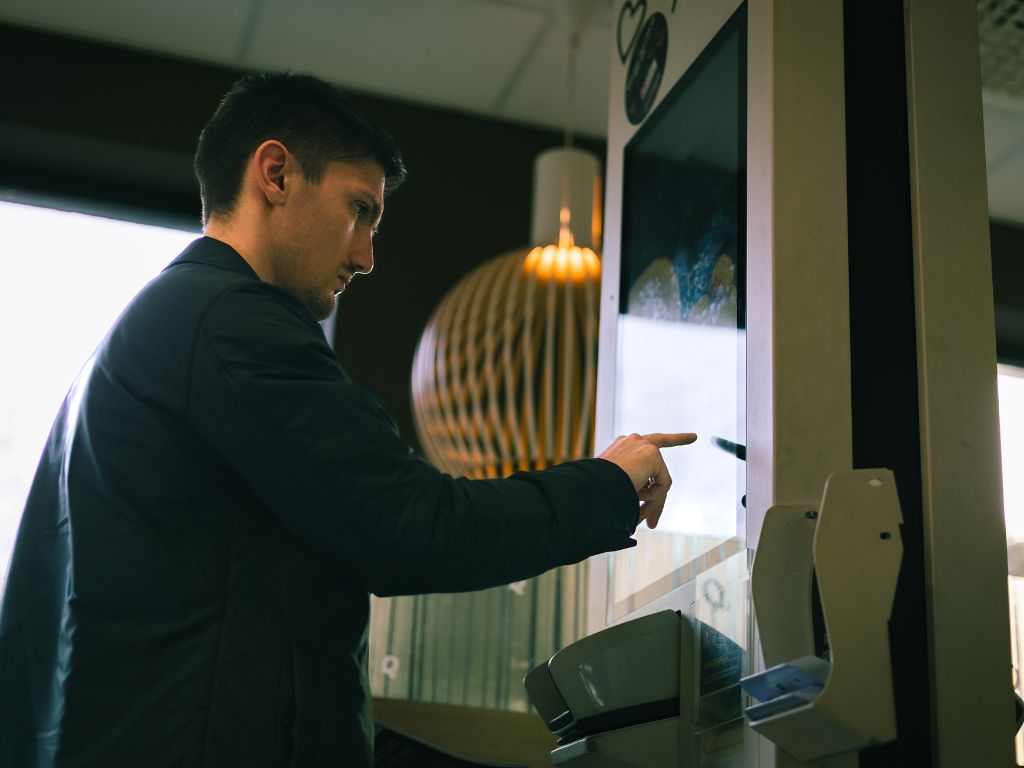
06. An optimized customer experience, from order to service
The impact of order terminals doesn't end when the customer selects his meal. They transform the entire experience, reducing friction points and streamlining every step of the way, from entering the restaurant to serving the dish.
A seamless journey: reducing stress at every stage
The customer experience begins long before the order is taken. If a restaurant gives the impression of being disorganized - too long a queue, laborious payment, slow service - the customer is frustrated even before he has tasted his dish.
This creates stress and undermines satisfaction:
➜ A never-ending queue: 57 % of customers give up if they have to wait too long.
➜ Checkout too slow: the customer is subjected to the pace of the service, which can feel like a waste of time.
➜ Ordering errors: Incorrect order-taking at the checkout leads to complaints and trips back and forth to the kitchen.
A terminal makes everything run more smoothly:
✔ The customer places his order as soon as he is ready, without waiting for an employee to become available.
✔ The route is simplified: from product selection to payment, every step is optimized to be intuitive and fast.
✔ He gets his dish back faster, with no risk of error or unpleasant surprise.
A more efficient restaurant, even in busy periods
Stress in the foodservice industry isn't just a customer issue. It also has an impact on the teams, who have to cope with peaks in traffic without losing efficiency.
How do bollards relieve service pressure?
✔ Fewer orders taken at the checkout : teams can concentrate on preparation and service.
✔ A better distribution of flows : orders arrive more evenly in the kitchen, rather than accumulating in a sudden rush.
✔ Fewer errors, fewer complaints: every ticket is clear, with no risk of misunderstanding.
"The customer experience is different from that of a traditional restaurant. Customers can order what they want at any time. [...] For us, what has changed in terms of organization is that it's difficult to recruit in the hotel-restaurant sector. So this has enabled us to hire runners with no experience, without needing to recruit experienced rangemasters."Mathieu Manager, Palmito Biarritz
Impact on internal organization :
✔ Easier recruitment, with less qualified but equally effective positions.
✔ A better-paced service, to avoid bottlenecks in the kitchen.
✔ Less stress for employees, that focus on quality rather than queue management.
A key driver of customer loyalty
Consumer expectations have evolved. They are looking for a seamless experience, with no loss of time, while maintaining a high level of service. A well-configured kiosk responds exactly to this need.
Key figures:
➜ 60 % customers declare that they would go more often to an establishment offering kiosks.
➜ 78 % of consumers want more in-store digital solutions.
What's in it for the restaurateur?
✔ A higher retention rate : a satisfied customer naturally comes back.
✔ Better flow management : less waiting, more orders collected.
✔ A modern, efficient image: a bollard conveys the image of an organized, innovative establishment.
By integrating a kiosk, a restaurant can also :
✔ Suggest a digital loyalty program which integrates directly into the interface.
✔ Offering personalized promotions, according to customer habits.
✔ Generate valuable statistics on consumer choices and preferences.
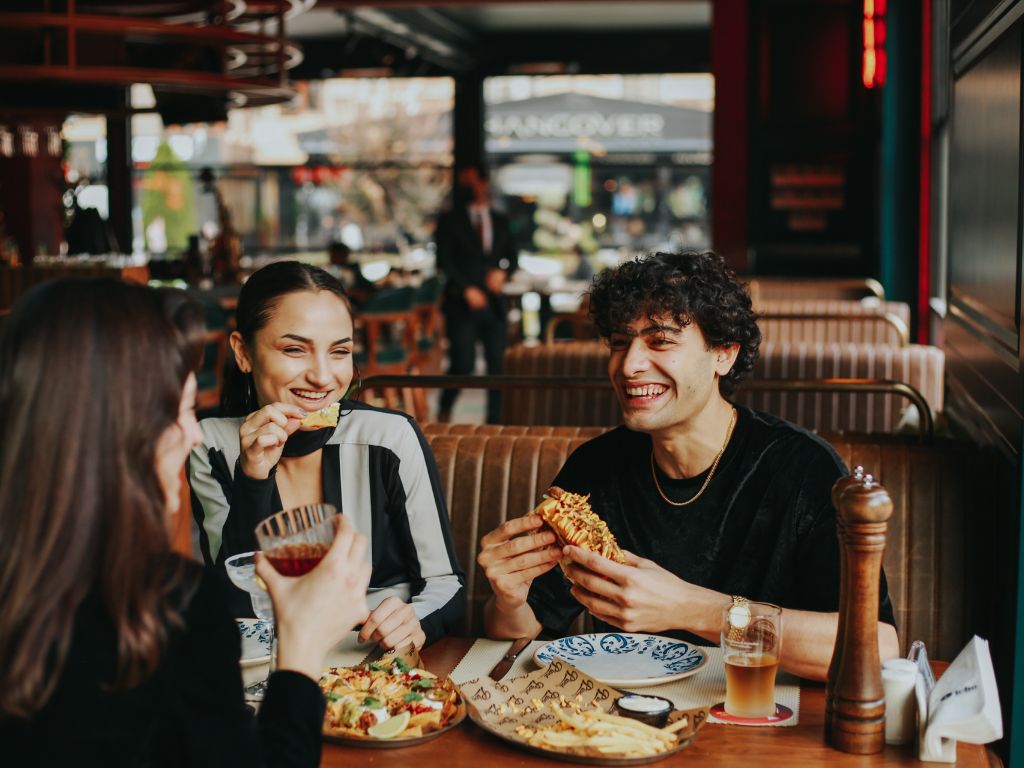
A solution that benefits customers and restaurateurs alike
By eliminating irritants in the customer journey, facilitating service management and optimizing restaurant profitability, terminals become a real strategic leverwhich transforms both customer experience and operational efficiency.
How about optimizing your order flow?
Our team is there for you to integrate terminals adapted to your operations and profitability objectives.
Read also:
➜ Everything you need to know about Obypay order terminals









